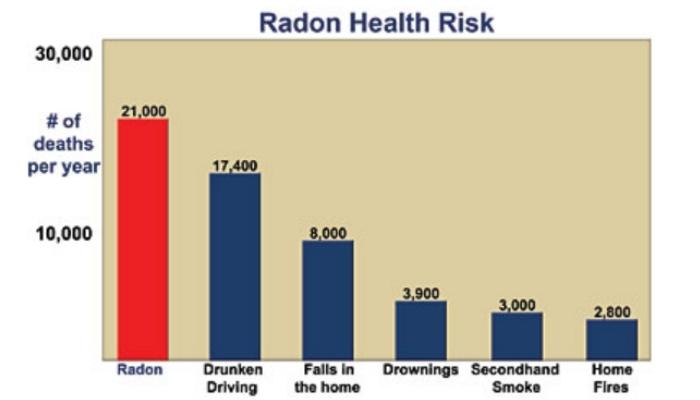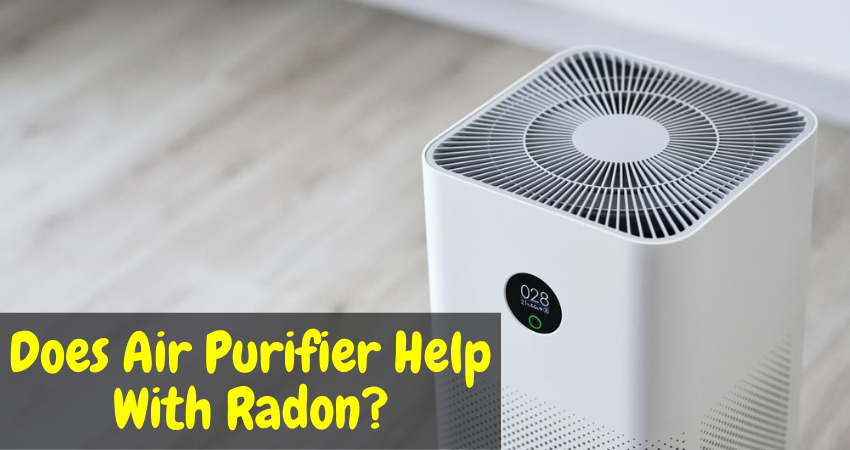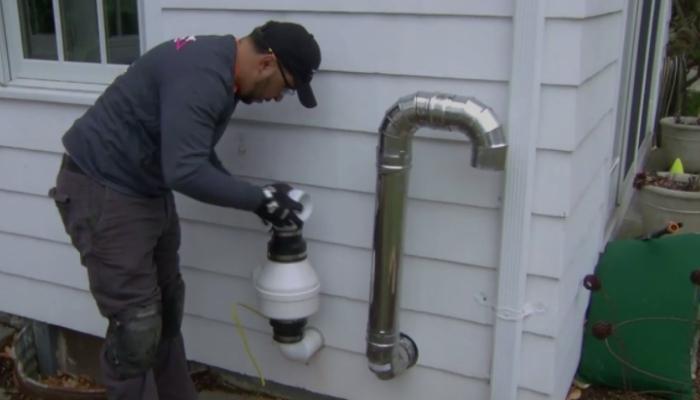Radon is a noble and inert gas found naturally in the earth’s crust. Although it is a noble gas, radon isn’t good for human health. Radon quietly dissolves without any odor or taste and creates radioactive elements. These elements often enter into the home as outdoor carries the radioactive particles. So, it can cause skin irritation and even cancer.
Thus, many people ask, while buying an air purifier, many people ask, “Does air purifier help with radon?” This is a pretty important question if you live near an industrial area where radon is mixed with other inert gas. So, what’s the real answer to this question?
As experts say, air purifiers with an activated carbon filter will catch and soak radon from the indoor air. Thus, activated carbon-based air purifiers will help you fight against radon gas and enjoy improved air quality.
Activated carbon is used widely in different air purifiers to soak and eliminate different gas and radioactive particles from the indoor space. Activated carbon works as a natural filter to trap the gasses into it and offer you clean and improved air. So, you will get rid of funny odors and harmful gasses that a regular air purifier can’t catch and clean.
What Is Radon and How Does It Affect Human Health?
Before we jump into finding how carbon activated air purifier can help you with radon particles, it’s important to know the basics of this inert gas.

You might know that radon is an inert and noble gas. Thus, it is widely accepted that radon won’t react with other particles in nature. So, presumably, radon should be safe without mixing chemicals and particles. It means humans should not fear it for any health hazards.
Nonetheless, this doesn’t happen in real life. Although radon is an inert gas and is highly unlikely to react with other chemicals, radon is highly radioactive.
So, why is radon so radioactive?
Well, the answer lies in the origin of radon gas itself. When uranium decays naturally, it turns into radon gas as a by-product of the radioactivity process. Since radon originates directly from uranium, it too turns out to be highly radioactive.
You will find radon inside the earth’s crust, rocks, and soils. However, it doesn’t stick in these natural elements. Gradually, it escapes from the rocks and soils and gets into the surrounding air. When it reaches the air around it, radon starts decaying further and faster. Consequently, it produces more radioactive particles in the outdoor air.
Nonetheless, in outdoor air, radon and its radioactive particles dilute soon. In indoor air, the presence of radon is around 5 Bq/m3 to 15 Bq/m3. This condensation of radon gas outdoor doesn’t offer so much threat to human health.
Nonetheless, things turn upside down as radon particles enter indoor spaces such as our homes or offices. In indoor space, radon doesn’t dilute as fast as it does in outdoor conditions. So, in indoor locations such as offices, homes, or schools, radon concentration can be 10 Bq/m3 to 10 000 Bq/m3 or even more.
When radon and its radioactive particles become so highly concentrated in the indoor air, it quickly becomes harmful for a human being. Thus, it can cause some serious health concerns.
- Living too long in radon exposure can cause lung cancer. In fact, studies show that radon is responsible for 3% to 14% of the total numbers of lung cancer in America.
- Radon exposure may also cause skin irritation. Thus, people will feel drier skin and discomfort if exposed to radon for too long.
What’s more alarming is that you can’t sense the presence of radon in the indoor space. It happens because radon is an inert gas, and it doesn’t have any distinctive smell, odor, or taste. So, your senses can recognize radon in the indoor air.
Therefore, you might live in radon exposure unknowingly. So, people naturally look for ways to control the radon in the indoor space. In this regard, an air purifier can be a good investment.
You can watch this video on radon to know its effect on human health.
Does Air Purifier Help with Radon?
Since radon doesn’t mix with any other chemicals or particles, it is extremely difficult to remove it from the indoor space. In fact, it remains in the indoor space for a couple of days. So, you need to vent it out from interior locations.

In this regard, investing in an air purifier can be your best deal. However, ensure that you get an air purifier with HEPA or activated carbon filters. It is important because activated carbon and HEPA filters will trap the radon particles inside their pores. Your regular air purifiers or YV-based devices won’t help you with radon removal.
Air purifiers with activated carbon filters
When dealing successfully with radon, your first choice should always be activated carbon filters. So, you must get an air purifier with activated carbon filters to eliminate all radon particles from indoor space.
Activated carbon filters have lots of tiny porous in its body. Although you might not see them with naked eyes, these porous will trap funny odors, smells, and gaseous particles from the air. As the gasses and other particles pass through the air purifier, its activated carbon will soak the odor and gas. It works against large particles and volatile compounds (VOCs).
Naturally, activated carbon will also catch and trap radioactive radon particles in your home. Thus, it saves you from the aftermath of radon exposure. Charcoal has activated carbon inside them. So, charcoal filters too can be useful for radon gas removal.
You may even use charcoal as a supplementary option along with the air purifier to boost its performance. Also, you can get natural charcoals easily and affordably from the market, which will truly be a great benefit to remove radon.
Air Purifiers With HEPA Filters:
HEPA stands for High-Efficiency Particulate Air, and it is one of the most widely used filters. You will see HEPA filters in clinics and commercial spaces for their sheer ability to remove and filter smaller particles such as pollen, dander allergens, dust mites, etc., from the indoor air. What’s more, an air purifier with HEPA filters works pretty fast.
HEPA-based air purifiers are a great solution to remove radon from the interior space thanks to their ability to trap almost any particles from the indoor air. You can depend on its performance to help you with radon.
Nonetheless, you should remember that activated carbon and HEPA filters aren’t 100% reliable in eliminating radon. Since radon is a gaseous element, you need to take the help of other useful means to remove it. We recommend you increase the ventilation of your home. When air can pass through the indoor space better, it will remove the radon particles faster.
Tips on Eliminating Radon from Indoor Space
Although air purifiers with HEPA or activated carbon filters can soak and trap radon gas, these options aren’t 100% reliable. Thus, you should use other aids to fight against radon particles along with the air purifiers.

Improved Ventilation:
The best way to deal with radon in your home is to improve the ventilation system of your indoor space. You can opt to keep the windows and doors open to let fresh outdoor air come inside. When you keep the windows open, the air will circulate better.
Thus, it will lower the radon concentration inside the rooms. Nonetheless, keeping the windows open to help with reducing radon can be self-contradictory. At the first point, it might help outdoor radon come inside through the air circulation. Secondly, keeping the windows open for too long will decrease the efficiency of your air purifier and humidifiers. Also, it will allow pollen, dander, and outside infestation to come inside the home. Thus, it would help if you balanced it properly.
We suggest keeping the windows open for not more than a couple of hours. After that, you can shut those windows off and turn on your air purifier to help with radon.
Moreover, you may consider installing a Heat Recovery Ventilation or HRV system. The HRV system will take the indoor air and release outdoor air in the home. Nonetheless, it will cool down or heat the outdoor air before releasing it in the indoor space. So, it can help you maintain the indoor air quality better with improved ventilation.
Use Suction Technique:
There are different suction methods available to help reduce radon development in your home. You need to look at your building structure and find the right suction method. So, we will show you different radon suction methods you can apply at home.
- The most common and effective way to remove radon from indoors is the sub-slab suction technique. This method will see suction pipes coming right across the floor slabs. These pipes then drain into the soil underneath the floor directly. You can install one suction pipe, which should work fine for most homes.
- Next is the sub-membrane suction technique. If you have a crawl home design, you can opt for this technique. It allows the radon to accumulate on the plastic covering on the floor. After that, a fan will vent the accumulated radon.
- Another effective way to reduce indoor radon is the drain-tile suction method. It is pretty similar to the sub-slab suction method. However, it uses the difference in pressure in indoor and outdoor space to vent radon from the interior locations.
You may also choose block-wall and sump-hole suction methods from these two suction techniques. Nonetheless, you should consult with a plumber or construction worker to install the right suction method depending on your home design and structure.
Summer Or Winter: When Is Radon Worse?
Many people wonder in which season radon is worse, summer or winter. They want to know its answer since it helps them use the air purifier better. So, here’s the takeaway.
Usually, radon is worse in winter for several reasons. Firstly, during winter, the air quality drops significantly. Also, due to the foggy environment in winter, different particles can concentrate more, and radon takes the help of improved concentration. It helps radon to stay more time indoors.
Secondly, during winter we spend more time in indoor space than outdoor. So, with a high concentration of radon at home, we are exposed to it frequently. It increases the chance of being affected by radon and its consequences.
Thus, during winter, you should run the air purifier for as long as possible. Also, it will help you in eliminating other contaminants such as dander, pollen, allergens, and dust mites from the indoor air. So, running the air purifier in winter helps with radon and improves the air quality. You will, therefore, enjoy a better environment while staying at home.
You can also think about getting the bathroom air purifiers since radon concentrates faster due to poor ventilation in the bathroom.
Nonetheless, you should also run the air purifier in the summertime to remove radon. It will also help you with breathing problems.
Frequently Asked Questions
Where Does Radon Come From?
Radon mainly comes from uranium through the radioactive process. Radon is an inert gas in rocks, soil, and earth crusts. As it doesn’t react with anything and is a gas, slowly it gets up from the earth’s crust and gets mixed with air.
Where should I use my radon tester?
You should apply the radon test kit in the basement since radon is the worst in the basement and garage due to condensation. Also, you can keep it inside the rooms to see how much radon has entered inside the rooms.
Final Words
Long exposure to radon increases the chance of lung cancer and other health complications quite considerably. Thus, you should find ways to reduce indoor radon concentration. But, does an air purifier help with radon?
Yes, you can reduce indoor radon concentration with the help of an air purifier. It will also help you maintain the indoor air quality better. Thus, you should get an air purifier at home and enjoy radon-free and improved air quality for healthy living.
